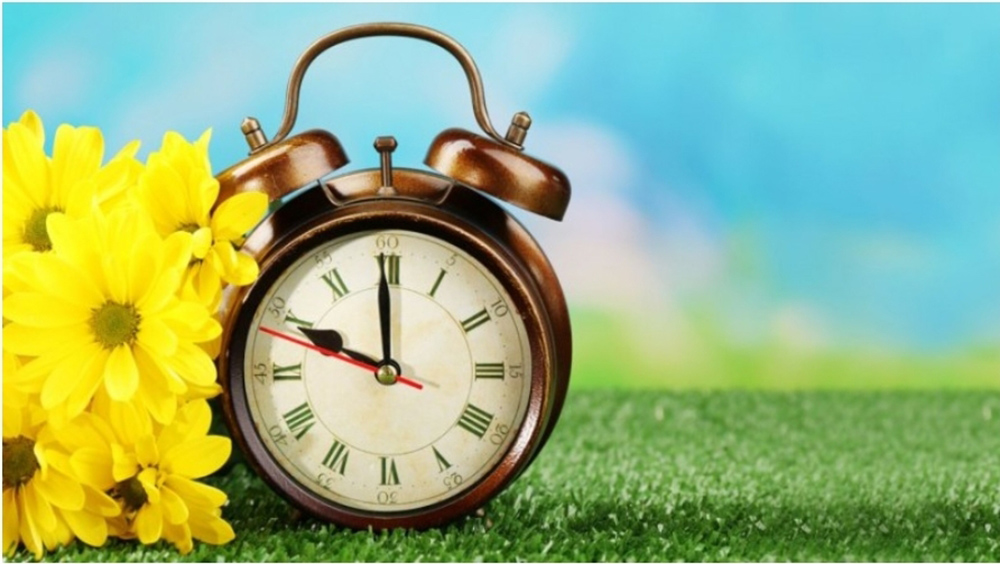Weather
By Dan Skeldon
I’m sure many of us are enjoying our spring-fling this week with a welcome surge of unseasonably warm temperatures. It’s a sure sign that the start of spring is drawing near, officially just before sunrise next Saturday morning (March 20th).
But before we spring our calendars ahead next weekend, the clocks will spring ahead this weekend. We return to daylight saving time late Saturday night, or early Sunday morning depending on your point of view. And most agree that losing an hour of sleep is a small price to pay for the extra evening daylight that is ours to enjoy all spring and summer long. It’s no secret that some of the nicest weather each year coincides when the sun sets after 8pm, which occurs this year from May 10th through August 9th.

Every year since 2005, when the government added two weeks onto the start and end of the practice, we are on daylight saving time from the second Sunday in March through the first Sunday in November. From early November through early March, or essentially the bulk of the winter, we follow Eastern Standard Time. Initially, daylight saving time was implemented over 100 years ago as an energy saving measure by shifting extra daylight into the evening hours, keeping people outside longer rather than inside using electricity. While enacted and repealed several times and only sporadically used after being first introduced in 1918, it’s been a steady fixture in some form across most of the country since 1966.
The advantages of daylight saving time are certainly well-known, especially on every tourist-friendly barrier island every summer. Longer and lighter evenings of course motivate us to get out of the house for recreation and exercise, and more fully enjoy the nice weather. And it’s no secret the tourism industry benefits from the extra evening daylight as well. But what if there was no spring ahead or fall back at all? What if we stayed on daylight saving time throughout the year? It’s an idea that’s gaining steam throughout much of the United States, with more than 200 bills and resolutions introduced in state legislatures over the last five years. But don’t get excited just yet, even if the idea gains traction here in New Jersey. For any state to observe daylight saving time year-round, Congress needs to pass a federal law allowing states to do so. That’s because of the Energy Policy Act of 2005, which only allows states to opt out of daylight saving time, not remain on it all year long.
Proponents of year-round daylight saving time tout the difficulties of our bodies adjusting to the time change each spring and fall under the current system. They also highlight the mood disorders that are sometimes associated with the early darkness on standard time each winter. In South Jersey for instance, the sun will set before 5pm from November 7, 2021 through January 17, 2022. If we didn’t “fall back,” our clocks this November, the earliest our sun would set in the winter would be a little after 5:30pm during evenings in December.
It’s important to note that when we spring ahead and fall back, we’re not really “gaining” or “losing” an hour when we move our clocks. Essentially, we’re just shifting the daylight, from the morning to the evening in the spring and then in the other direction come the fall. As a result, there would be a price we would pay if we didn’t turn back our clocks and chose to remain on daylight saving time throughout the winter. While the sun would not set as early each December, sunrises would be noticeably later.
In that scenario for instance, our sun would rise between 8am and 8:20am for almost two months in the middle of winter, from early December through early February. The persistent later sunrises would be tough for some of us to get used to, as our work and school days would begin in extended darkness. Of course, we’ll get that time back in the early evenings throughout the winter.
So what’s your preference? Keep springing ahead and falling back? It’s a task made easier since most of our clocks, at least those on televisions, cable boxes, iPhones, and even our cars, change automatically. Or do we change tradition, and try something new? It wouldn’t be the first time, as it was temporarily enacted in the mid 1970s, but repealed shortly after due to unpopularity about those aforementioned late winter sunrise times.
But whichever your preference, no changes to our current practice is imminent. So we’ll all lose that hour of sleep this weekend, but revel in our first 7pm sunsets since last fall come Sunday evening.
And hopefully we’ll “spring ahead” to permanent warmer weather in the process. But knowing the roller coaster nature of spring temperatures in South Jersey, that may be a tall order.
Meteorologist Dan Skeldon has a degree in meteorology from Cornell University. He has forecasted the weather in South Jersey for the last 18 years, first on the former television station NBC40 and then on Longport Media radio. Dan has earned the American Meteorological Society Seal of Approval for Broadcast Meteorologists, and now does television broadcasts on WFMZ-TV in Pennsylvania’s Lehigh Valley.











